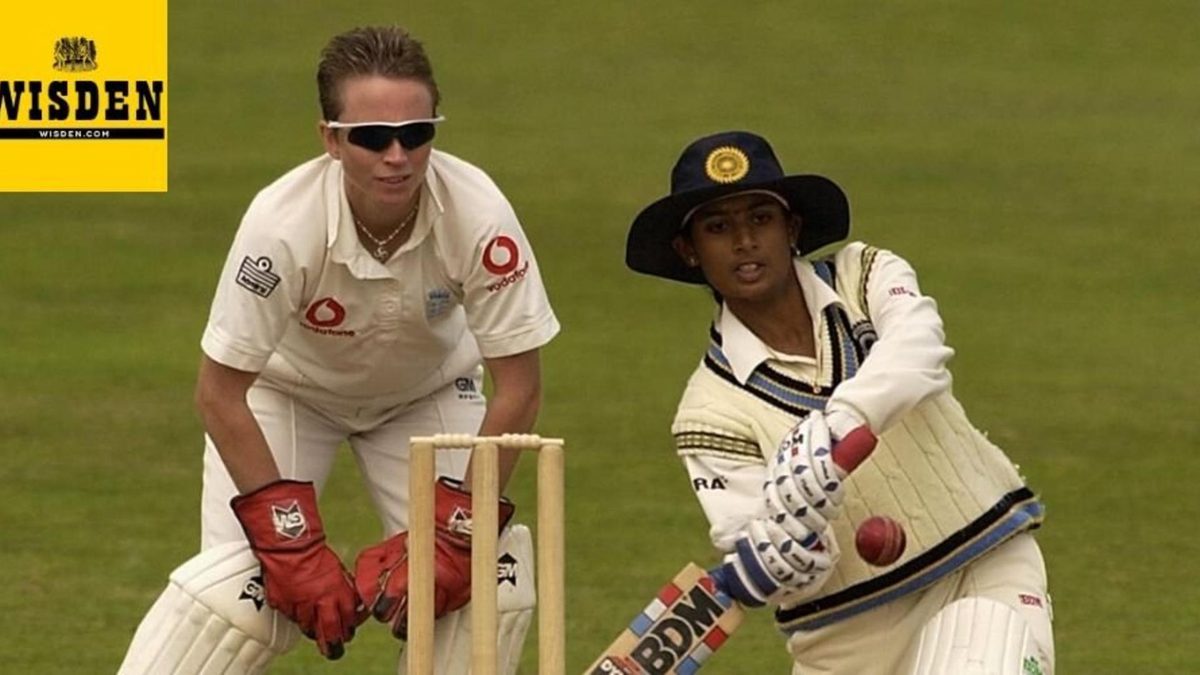
A young Mithali Raj made history when she scored 214, a then-highest Test score, to salvage a disappointing tour of England in trying conditions. Manoj Narayan looks back at the knock that made her the face of women’s cricket in India.
Mithali Raj 214 (407)
England v India, 2nd Test
The Cooper Associates County Ground, Taunton
August 14-17, 2002
It was an innings that should perhaps be spoken of in the same breath as VVS Laxman’s 281 against Australia the year before. It was historic, not just from a numbers perspective – Raj’s 214 was the highest individual Test score in the women’s game at the time, and is still the second-highest – but for what it meant to a side just entering the modern era.
Earlier in the tour, in a tri-series against New Zealand and England, India had been bundled out for an embarrassing 26 in an ODI. Thereafter, persistent rain washed out the first Test, and tested the players’ patience. Yet, with some defiant swooshes of her bat, Raj showed she had patience left in spades and changed how both history will review that tour and the world at the time viewed Indian women’s cricket.
In all, she batted two minutes shy of 10 hours, taking the crease after tea on the second day. She ended with the highest score in women’s Test cricket, but there were several junctures when it could all have changed course. In response to England’s first-innings 329, India had sent in Mamatha Maben, who had never opened before, to bat time and take the shine off the new ball, along with Sunetra Paranjpe. She did.
Hemlata Kala had accompanied Raj in an all-important 144-run stand for the fourth wicket, but that stand was broken when Raj was on 97. She knocked off the runs for her maiden Test century, but India continued to slide and were struggling at 297-6, in danger of being bowled out and conceding the lead.
According to The Fire Burns Blue, it was then that Jhulan Goswami walked in, grumpy that she was asked to hang in and bat, despite not being allowed to practice batting in the nets before the match.
However, when Raj conceded to her that she was tired and unsure of how long she could last, Goswami made a telling contribution. She coaxed Raj into playing on. “If you aren’t able to concentrate or you are feeling tired, just look at the [India] flag,” she is quoted as saying in the book. “Even if you don’t do it for yourself, do it for the flag.”
It’s #WorldBookDay 📖
📹 Mithali Raj, the 🇮🇳 captain, spoke about her fondness for reading during the ICC Women’s World Cup 2017. pic.twitter.com/rXcf0vkdbl
— ICC (@ICC) April 23, 2020
The two went on to add 157 runs for the seventh wicket. Isa Guha, who made her England Test debut that day, remembered Raj’s “languid style, very classical” while Jhulan, who had the best seat in the house, particularly remembered Raj’s cover drives.
Even after scoring the double century, much to the relief of a tense dressing room, Raj had another milestone to breach – Karen Rolton’s 209, the highest Test score in the game. She did that off the last ball of the day, and despite adding just four runs to her overnight total the next morning – Guha, who trapped her in front, said it was “pure relief” – India had a new icon.
The visitors scored 467 and the match ended in a draw. It was India who celebrated.








